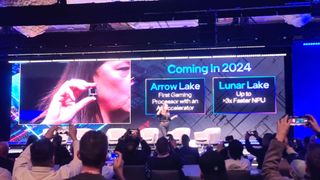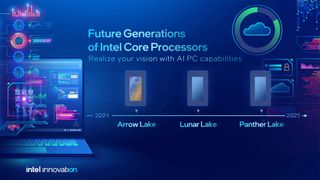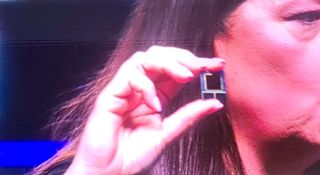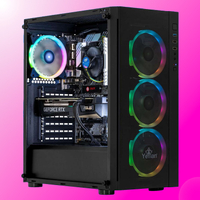Intel's Lunar Lake is on track for a 2024 appearance, along with significant IPC gains in the CPU core and three times more AI performance from GPU and NPU
Little Lunar will be launching in low-power, lightweight laptops. Lovely.

Along with the promise that its next generation Arrow Lake desktop CPUs will be coming to market in the second half of 2024, Intel also announced that another new architecture will arrive this year, too. Lunar Lake will be an evolution of Meteor Lake and, although it's squarely aimed to be as low-power as possible, Intel is also claiming significant improvements to the CPU core's IPC (instruction per cycle) and up to three times more AI performance in the GPU and NPU.
Despite endless and somewhat repetitive talk of AI at this year's CES event, Intel has clearly been rather busy of late, pushing forward on CPU design and chip manufacturing technologies. The recently launched Core Ultra series of laptop CPUs are based on the Meteor Lake design, which involves having the chip as a whole comprising multiple tiles: Compute, graphics, system, and input/output.
In the case of that particular processor, Intel makes the compute tiles on its Intel 4 process node, whereas the rest are made by TSMC. Meteor Lake will be joined (or possibly superseded) by Lunar Lake at some point in 2024, and the compute tile will get a serious overhaul. How much of an upgrade is still unknown, though Intel is promising significant improvements to the CPU core's IPC.
This is a measure of the number of instructions that can be processed in one clock cycle, and it varies not only from architecture to architecture, but also from instruction to instruction. A higher IPC means that clock speeds don't necessarily need to be increased to get more performance, which in turn means the chip can run slower, use less power, and generate less heat.
Power and heat have been Intel's bugbear for a long time now, so any improvements in this area will be more than welcome.

Lunar Lake's other big improvement will apparently come from the graphics tile and NPU (neural processing unit) that's nestled inside the system tile (typically called the SoC). At its Client Computing keynote event at CES 2024, Intel's executive vice president Michelle Holthaus claimed that Lunar Lake will offer up to three times more AI performance in the GPU and NPU.
I'm less interested in the NPU's gains than the GPU's as there's only one way to get such a big improvement in a graphics chip: More cores running at higher clock speeds. Intel's latest GPUs sport matrix cores similar to Nvidia's Tensor cores and these handle AI calculations. For PC gaming, they get used to perform upscaling and in the case of Nvidia, machine learning-powered Frame Generation.
The biggest gaming news, reviews and hardware deals
Keep up to date with the most important stories and the best deals, as picked by the PC Gamer team.

If we assume that Holthaus was using the Meteor Lake-powered Core Ultra chips as the reference point for the three times more AI performance claim, then it bodes well as to how well future lightweight laptops will handle modern games. It doesn't necessarily mean they'll have better rendering capabilities but if they can do upscaling well, then it won't matter so much.
Holthaus also waved a Lunar Lake sample about for a brief moment, with the crowd of visitors furiously trying to get decent images of it. From where our own Jacob was sat, it looks pretty compact and appears to have two RAM chips embedded in the CPU packaging. Lunar Lake may well be set for low-powered notebooks but if it turns out to be a great little chip, you can bet your last dollar that more than one handheld PC will end up sporting one of them.
And that would be just lovely.
Best gaming PC: The top pre-built machines.
Best gaming laptop: Great devices for mobile gaming.

Nick, gaming, and computers all first met in 1981, with the love affair starting on a Sinclair ZX81 in kit form and a book on ZX Basic. He ended up becoming a physics and IT teacher, but by the late 1990s decided it was time to cut his teeth writing for a long defunct UK tech site. He went on to do the same at Madonion, helping to write the help files for 3DMark and PCMark. After a short stint working at Beyond3D.com, Nick joined Futuremark (MadOnion rebranded) full-time, as editor-in-chief for its gaming and hardware section, YouGamers. After the site shutdown, he became an engineering and computing lecturer for many years, but missed the writing bug. Cue four years at TechSpot.com and over 100 long articles on anything and everything. He freely admits to being far too obsessed with GPUs and open world grindy RPGs, but who isn't these days?
Most Popular






